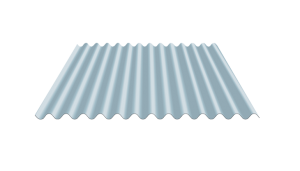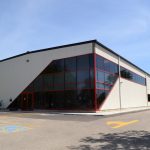
Steel Costs remain volatile due to the outbreak of the war in Ukraine and other macro-economic factors.
In this Market Update, we highlight some of the key factors impacting today’s steel prices and what to watch in the future.
The outlook for steel prices and supply & demand for 2022 and 2023 is highly uncertain. The expectation of a continued and stable recovery from the pandemic has been shaken by the war in Ukraine, rising inflation, supply chain challenges and geopolitical instability.
The geopolitical situation surrounding Ukraine poses significant long-term implications for the global steel industry. Among them are a possible readjustment in global trade flows, a shift in energy trade and its impact on energy transitions, and continued reconfiguration of global supply chains.
Domestic buyers placed orders for large quantities of imports in January and February. Import costs were favorable to domestic costs, but after the war in Ukraine broke out on February 24, import orders decreased significantly. Therefore, we expect to see lower import volume arriving in the summer and fall of 2022.
The global labour shortage is expected to challenge production and delivery costs for steel mills and fabricators throughout 2022 and 2023. The mills have also increased their offerings of spot purchases at discount prices in May. Historically, rapid changes in steel mill costs are often followed by a market correction. The market has a history of overreacting to changes in the supply and demand dynamics that drive steel costs, so price corrections are common, particularly in the US.
Spot prices for Galvalume have not decreased as much as other steel categories. Galvalume costs tend to be more volatile due to the smaller number of buyers and sellers in the market.
The TRQ for The UK went into effect on May 31. Five-hundred thousand tons imported from the UK will enter the US tariff-free, but all additional tons will be subject to a 25% tariff. The goal is to ensure strong domestic capacity utilization. Britain is a relatively small supplier of steel to the United States. The 500,000-ton quota for finished steel exceeds average UK shipments to the United States in 2018 and 2019 and is considerably smaller than the EU quota of 4.3 million tons and Japan’s quota of 1.25 million tons. The UK tariffs will also expire in 1 year.
Some suppliers offer AZ35 rather than AZ50 grade Galvalume. However, AZ35 does not meet the code requirements for metal roofing, and it does not meet the definition of Galvalume. Quality metal roof paint coatings are not designed to be applied to AZ35. AZ35 is significantly thinner than AZ50 and has no corrosion warranty. Using AZ35 substrate leaves the installers and manufacturers vulnerable to litigation when roofs leak and rust.
Robertson Building Systems closely tracks factors that impact our market and the industry and provide our builders with information on their influence on our costs and lead times.
Freight disruption continues to delay deliveries and lead times.
Trucking costs are at an all-time high due to a combination of inflation, driver shortages, and market demand. Overall freight rates excluding diesel fuel are up 34% from 2020 and 15% from 2021. In addition, the recent diesel volatility and the uptick in fuel prices have put extreme pressure on the transportation industry, causing prices to surge since March 2022. The current national average for diesel fuel is up 53% from January 2022, resulting in the highest fuel cost ever across the US. Freight demand remains strong across the US and will add further pricing pressure going into Q3 & Q4 of 2022.

The outbreak of the war in Ukraine on February 24 had an instant effect on steel prices and will most likely keep costs relatively high for the remainder of 2022. If the war was to end immediately, it would still take several months for market conditions to return to normal and an end to the war will not necessarily result in the removal of sanctions.
In this Market Update, we highlight some of the key factors impacting today’s steel prices and what to watch in the future.
Steel prices and supply and demand will continue to be volatile due to factors influenced by the war in Ukraine, interest rates, inflation, supply chain challenges, geopolitical instability, and transportation shortages.
The surge in global steel prices has eliminated the cost advantage that imports had over domestic steel.
The replacement of the Section 232 Tariffs gave import prices a significant advantage over domestic prices. However, the effect of the war in Ukraine has since had a major impact on the European market which offsets the cost advantage.
The war in Ukraine has had a significant impact on domestic steel production.
Conflict between Russia and Ukraine has resulted in cost increases for the raw materials used in steel production.
The following cost increases have been realized between February 24 and March 24:
Federal Reserve officials voted to lift interest rates a quarter point and signals more to come.
The Fed voted to lift interest rates and penciled in six more increases by year’s end, pointing to a consensus funds rate of 1.9% by year’s end. This act is the most aggressive pace in more than 15 years, in an escalating effort to slow inflation that is running at its highest levels in four decades. The Fed will raise its benchmark federal-funds rate by a quarter percentage point to a range between 0.25% and 0.5%, the first rate increase since 2018.
The implications of the war in Ukraine for the U.S. economy are highly uncertain but are likely to create additional upward pressure on inflation and weigh on economic activity.
Freight disruption has further delayed deliveries and lead times in the market.
Freight cost increases affect every partner in the value chain, ultimately impacting delivered costs. Like many other suppliers and service providers mills too are experiencing increases in energy costs, import freight cost, material transfers and other indirect costs.
The oil market has been extremely volatile. Oil was expected to increase to ~$300/barrel when the war broke out, but that no longer seems likely. Costs will remain elevated in 2022 because of low oil supply, the war, and a shortage of truck drivers. None of those factors are likely to be resolved in the short term, but we will be closely monitoring the situation.

The imbalance between supply and demand was without a doubt the main driver of the US steel price increases in 2021. With limited capacity—both planned and unplanned—the scales were firmly tipped in the mills’ favor. However, lead times, service center inventories and mill production capacity have recently returned to normal levels adding downward pressure on steel prices. There is broad uncertainty around what 2022 holds and whether those factors that fueled demand last year will continue.
In this Market Update, we highlight some of the key factors impacting steel prices today and what to watch in the future.
Demand for steel will be more fluid than supply due to variability in key macroeconomic factors such as interest rates, consumer sentiment and disposable income. These factors will be influenced by inflation, supply chain challenges, geopolitical instability, labour shortages, transportation and of course, COVID-19.
As of January 2022, the Section 232 Tariffs on steel imported from the EU were replaced by a Tariff Rate Quota system. Under the new system, the first 3.6M tons of steel imported from the EU will be exempt from any tariffs, but not all steel qualifies for the exemption.
Steel imports are at a six-year high, increasing now four months in a row. As tariffs are dropped and international supply puts pressure on domestic supply, we expect an impact on steel prices over the next several months.
Mills are facing high input costs in a declining price market, after posting record-breaking sales numbers in 2021. Because of the influx of imported steel mentioned above, there is uncertainty around capacity utilization and the potential that prices will adjust downward.
The commercial construction outlook for 2022 is positive despite facing the highest rate of inflation since 1982. In December, the PPI for inputs to nonresidential construction was up 23% year over year and generally prices continue to march higher. This includes prices for key building products like bar joist, clips, fasteners, as well as insulation and paint where supply constraints are still prevalent.
Labour shortages are now recognized as the biggest challenge businesses are facing, and it doesn’t seem to be going away anytime soon. The availability of labour to produce goods will directly impact production capacities, keeping prices high despite declines in raw material costs.
The American Trucking Associations (ATA) estimates the current driver shortage at 80,000 and believes it will double by 2030. The shortage stems from high driver turnover, an aging workforce and barriers around regulation. This, combined with already high shipping rates (up 14% year over year) and infrastructure challenges, are leading logistics companies to project double-digit growth in contract rates in 2022.
Based on the announcements made in January by Fed Chief Powell, money won’t come as cheaply as it did in 2021. The US government will attempt to reverse the spiking inflation rate, increasing rates for the first time since the pandemic started. While the specifics about execution were left undecided, the intent was clear: efforts will be taken to slow rising inflation and over time, prices should drop.
January ended with a Brent crude barrel close to $90 and some analysts forecast summer prices at $100 or more, the highest we’ve seen since 2014. The most notable contributing factors to the price hikes are low inventory levels and production combined with increasing energy demand as the worldwide economies reopen despite Omicron. Relief from OPEC and its cooperators is questionable, and if tensions at the Ukrainian border do not de-escalate, we could see major supply disruptions and even higher energy prices, impacting both inflation and discretionary spending.
Our Market Updates are brought to you by Cornerstone Building Brands subject matter experts and are curated for the purpose of creating awareness of economic factors that may potentially impact pricing, supply and demand affecting our customers. Any forward-looking statements are based on reasonable assumptions; these statements are not guarantees and undue reliance should not be placed on them. All views or opinions herein are solely those of the author(s) as of the date of this communication and are not to be relied upon as authoritative. Nothing in this communication should be considered to constitute investment, legal, accounting, or tax advice or other advice of any kind.

The Metal Building Manufacturers Association (MBMA) recently awarded Cornerstone Building Brands with a silver member volunteerism award at their latest annual meeting held in December 2021. The award recognizes the Cornerstone Building Brands Shelter (formerly Commercial) business for outstanding volunteerism, service to the metal building industry and support of the MBMA.
The MBMA presents volunteerism awards to its members at their annual meeting each December. Volunteerism is measured by the number of association meetings attended by employees of member companies. The awards are broken down into gold, silver and bronze level winners, with only 20 percent of members receiving a volunteerism award.
As a long-standing member of the MBMA, the Cornerstone Building Brands Shelter business has greatly benefited from the association’s industry advocacy efforts. Together, they have entered new markets and evolved the capabilities within the metal building industry.
Tony Bouquot, MBMA’s general manager, extended his congratulations to the Cornerstone Building Brands Shelter business for the recognition. “Congratulations to Cornerstone Building Brands on your silver level volunteerism award. We appreciate your service to the association and the industry.”
Michael McWeeney, director of corporate accounts for the Cornerstone Building Brands Shelter business and member of the MBMA board of directors, expressed his gratitude for the award. “Thank you to the MBMA for honoring the Cornerstone Building Brands Shelter team. We are committed to continuing to service the industry and association.”

For over 150 years, Robertson has been at the forefront of the Canadian custom-engineered building industry, delivering a complete building envelope solution to those we’re fortunate to call our customers. Our long-standing history and heritage are something we are very proud of. 158 years later, we have built a reputation as a Canadian leader in custom engineered metal building systems; providing end-to-end integrated solutions in the commercial and industrial industries. Part of our extensive history includes our integration into North America’s largest supplier of residential and commercial building solutions, Cornerstone Building Brands.
Robertson is also now part of a larger Canadian Community of Cornerstone employees who share the vision of bringing value to the forefront – for our employees, customers and stakeholders. To support this shared vision, a new home is being created for Cornerstone Building Brands Canada and Robertson Building Systems teams. This modern and enhanced working environment is under development in Brantford Ontario and slated to open in April 2022.
While renovations are underway in our new space we will be vacating our office in Ancaster, ON in February 2022. Please update our previous details accordingly to the address as follows:
We announced today that Cornerstone Building Brands has entered into an agreement to acquire Union Corrugating Company Holdings, Inc. (UCC), headquartered in Fayetteville, North Carolina.
UCC is a leading provider of residential metal roofing, metal buildings, and roofing components including the Union Corrugating and Reed’s Metals brands. As a part of this agreement, we will acquire 19 regional facilities located in Central and Eastern U.S. will welcome approximately 700 employees into our organization once the deal is finalized.
The addition of UCC to our portfolio advances our growth strategy by expanding our portfolio in the residential metal roofing market by broadening our offering of low maintenance and environmentally sustainable roofing solutions.
This transaction is subject to regulatory approval and customary closing conditions and is expected to close in fourth quarter of this year. Until then, you will continue to work with your existing Cornerstone Building Brands and Union Corrugating Company representatives in the same way as you do today. As always, our first priority is to serve you and we remain committed to providing you with exceptional product quality and service.
Cornerstone Building Brands is pleased to announce that Michael Pegues has joined the company as Director, Sales for Robertson Building Systems. Pegues will oversee sales for Robertson while collaborating with marketing, customer service, drafting and engineering to serve customers and drive growth for the Robertson portfolio.
Pegues is an accomplished professional with a track record of driving business growth and developing talent. He comes with more than 10 years of experience in leadership roles at CGC, four years at Praxair and previous experience in the steel industry. His diverse background has given him the deep local knowledge of the Canadian market builders can rely on to meet their unique and evolving needs.
“We are excited to welcome Michael to the Robertson team,” said Cornerstone Building Brands President, Engineered Building Systems Matt Ackley. “We’re confident he has a winning combination of experience and knowledge that will continue driving growth for our builders and Robertson.”
 The Metal Building Manufacturers Association (MBMA) has elected Michael McWeeney to its board of directors. Michael will contribute to the advancement of the metal building industry on the board as well as represent Cornerstone Building Brands and its brands.
The Metal Building Manufacturers Association (MBMA) has elected Michael McWeeney to its board of directors. Michael will contribute to the advancement of the metal building industry on the board as well as represent Cornerstone Building Brands and its brands.
As Director of Corporate Accounts for Cornerstone Building Brands, McWeeney has fortified his expertise in the metal building industry. Specifically, he focuses on large national accounts and emerging markets such as the cannabis industry and private label sales.
McWeeney’s addition to the MBMA board comes at an important time for the association as it is making the transition back into in-person events and helping members navigate the unusual challenge of a strong, recovering economy coupled with raw material shortages.
Tony Bouquot, MBMA’s general manager, gladly welcomed McWeeney to the board. “We are excited to have Michael join the MBMA board of directors. Cornerstone is an important, long-time member of the MBMA, and we are pleased to have them represented on the board.”
Matt Ackley, Cornerstone Building Brands President of Buildings, also expressed his congratulations and support for McWeeney on his addition to the MBMA board. “I am pleased to have Michael represent Cornerstone Building Brands and our brands on the board of the MBMA. I am confident that our industry will be stronger as a result of his contributions.”
McWeeney also expressed his gratitude for being named to the board and his enthusiasm to get started. “I am honored to represent Cornerstone Building Brands on the board, and eager to learn from industry experts to bring new ideas back to our company to leverage future success.”
Learn more about the Metal Building Manufacturers Association by visiting www.mbma.com.
 We are pleased to announce that Joey Yusefawich has joined Robertson Building Systems as the new District Manager for the province of British Columbia. Joey will work side by side with customers and demonstrate the intelligence and tenacity they have come to expect.
We are pleased to announce that Joey Yusefawich has joined Robertson Building Systems as the new District Manager for the province of British Columbia. Joey will work side by side with customers and demonstrate the intelligence and tenacity they have come to expect.
Originally from Winnipeg, Manitoba, Joey has held many positions that have made him a well-rounded individual, including working as a production manager in the window industry and a territory manager for EFCO Canada Inc.
Joey shared his enthusiasm for joining the Robertson team: “I’m extremely excited to be a part of the Robertson Building Systems and Cornerstone Building Brands family. I’m enjoying developing new relationships and selling custom-engineered buildings!”
Please join us in welcoming Joey to his new position!

We are excited to announce the completion of our updated website. See our revamped product section, new case study section and new literature.
 |
Products Our product section has been revamped, and more information is now available for framing systems, panel systems, and accessories. |
|
|
Literature Two new brochures for Robertson’s Retrofit Solutions and Mini- and Self-Storage Facilities are available, with more additions coming soon. |

|
Case Studies Our collection of case studies involving our builders’ signature projects have a new home under the Resources section. |
We hope you find the new enhancements useful. Be sure to visit our website often as we regularly update our content with original blog posts, case studies and podcasts to support you, from planning to building and beyond.
—
Dear Robertson Builders,
In the process of providing our valued customers with better solutions and streamlining services, we have looked at many areas, such as Seamers. With new technology and customer service, Developmental Industries (DI) can provide better efficiency for our customers. DI Seamers has been doing this for decades and perfected the efficient ways of providing this service to customers all around the world.
Developmental Industries (DI) has been in the business for over 30 years and is the largest dedicated roof seamer manufacturers in the world. They not only manufacture seamers for many different profiles but sell, rent, test, conduct R & D and maintain their products.
They have two locations; Corinth, MS and Mesa, AZ.
They offer efficient seamer ordering via their website with easy online order forms.
The order forms are straightforward with graphical assistance and once an order is completed a confirmation email is sent confirming your order.
The most beneficial feature is that they now have a mobile app that allows seamer rental, support, live chat, troubleshooting, videos, and seamer shipment tracking. All at your fingertips whether in the office, on the road or on the job site.
We feel with the benefits available, and the advantages of directly interfacing with DI for your seamer needs now is the time for Robertson to step away from seamer rental processing.
As of January 1st, 2021, Robertson Building Systems will no longer be processing seamer rentals.
We encourage you to please visit their website and become familiar with their product offerings, services and resources.
Below is the link to their website and attached is a PowerPoint presentation to help you navigate the website.
Any questions please feel free to ask, as we are available to help with this transition.
View Powerpoint Presentation >
INDUSTRY UPDATE – WHAT’S HAPPENING WITH STEEL?
Those who have been in the metal buildings industry for a while are all too familiar with the volatility of the steel market. The cost of hot-rolled sheet peaked in 2004 and then again in 2008 just before the real estate crisis. At the time, this was noted as “the worst steel shortage in history” and the mills were working at 90% capacity. When the housing bubble burst, prices dropped suddenly over a 19-week period, as did capacity to 33%.
The dramatic swings are unsettling, however, familiar. But like everything else that has defined 2020, this recent spike is just another event we are ready to see the other side of. No business, market or economy has gone untouched by the short-term effects of the global pandemic, and the steel industry has been no exception.
The imbalance between supply and demand is without doubt the main driver of US steel prices increasing. With limited capacity—both planned and unplanned—the scales have firmly tipped in the mills’ favor. These prices are intricately connected to the global market for steel, and because other countries are coping with the similar economic challenges, a solution is farther than we would like.
Key Industries Continue Consumption at Pre-COVID Levels
The give-and-take that affects steel price is fundamentally a remarkably simple supply and demand relationship. The construction industry started strong in 2020 and remained so given it is deemed an “essential business” in most states. As building and infrastructure construction continues, so does the consumption of raw material used in rebar, framing, pipelines, and tracks.
Similarly, the automotive industry, which is the second largest consumer of steel products, continues at full strength. In fact, while most manufacturers were expected to suspend production through October due to COVID-19, they surprised the market, and some produced at higher levels than prior years.
Residential New Construction, Renovation & Remodeling Grows
While commercial industries have taken a hard hit this year, those that support the upkeep and renovation of residences have found themselves in a unique position of growth. With social distancing measures in place and the encouragement by authorities to stay put, people are spending more time at home. Homes have become a primary locale for family entertainment and meals once again.
So it is no surprise that the home appliances category has flourished, on top of an already expected growth stemming from a rise in disposable income coupled with rapid urbanization. Discretionary budgets have been reallocated from annual vacation funds to home improvement projects, as demonstrated by the extremely high sales volumes building supply stores like Home Depot and Lowe’s have experienced this year.
Additionally, others who are now working from home on a semi-permanent or permanent basis are taking the opportunity to move to new residences in more desirable locations with home offices, or add-on an office to their existing home. This influx has driven demand for steel-based machinery such as earth moving equipment.
Health Precautions Tighten Mill Capacity
Due to the nature of COVID-19 and how it spreads person-to-person, government and health authorities have recommended that building operators and companies reduce the number of people confined within a space —in some cases to as low as 50 percent. For this reason, restaurants, retail shops and manufacturing companies have reduced building capacity or adopted alternating shift schedules. The steel mills are no exception to this, putting further constraints on maximum capacity. This has directly affected lead times, extending them to historical highs and making late shipments quite common.
Mill Shutdowns
Given the extraordinary and costly effort required to upgrade mill facilities and equipment, enhancements to aging plants are planned many years in advance. For example, US Steel is making improvements this year that were planned and announced in 2017, around the last time we saw sudden price increases which were related to Section 232. These equipment upgrades require temporary shutdowns affecting industry supply of steel, and the risk associated with rescheduling a planned upgrade is prohibitive even if demand is strong.
To top of off, unplanned shutdowns are occurring for assorted reasons further contracting supply. In August at NLMK, whose operations are based out of Pennsylvania and Indiana, employees went on strike for reasons related to worker healthcare benefits and negotiations are currently paused. The Stelco mill, which is based out of Hamilton, Ontario and primarily serves the Canadian market, fell victim to a cyberattack halting steel output.
Any time that a mill halts or slows production—planned or unplanned—industry supply is affected and adds pressure to the price of these raw materials.
Imports Slow
When domestic production is lacking, large steel consumers typically look to foreign suppliers to offset the supply shortage. It would seem leveraging the benefit of globalization is an obvious solution to close the gap. However, given the pandemic is also by definition global, mills around the world are facing the same general challenges with some political nuances sprinkled in.
Considering the market conditions already affecting the domestic steel producers, the United States has reduced the quota for Brazilian steel imports by 80 percent. Ferrous scrap prices have increased due to demand in Turkey, and Chinese and German prices have also risen very recently. The effort for steel consuming industries to source internationally is not for lack of trying—but the economics do not support it.
What to Expect
Given the supply challenges the steel industry is facing, prices will naturally rise until the supply curve intersects with the demand curve. This is the case across any steel-consuming industry which means continued inflation through the automotive, appliance and construction industries.
We are optimistic that this is only short-term, pending the widespread availability of a COVID-19 vaccine and thus increased capacities, but it is difficult to say for sure. Unrelated to the pandemic, there is an unusually high amount of mill capacity scheduled to open in 2021.. This brings us hope that even if all other factors continue to put pressure on price, we will see some relief in the coming year and resume some semblance of normalcy… This brings us hope that even if all other factors continue to put pressure on price, we will see some relief in the coming year and resume some semblance of normalcy.